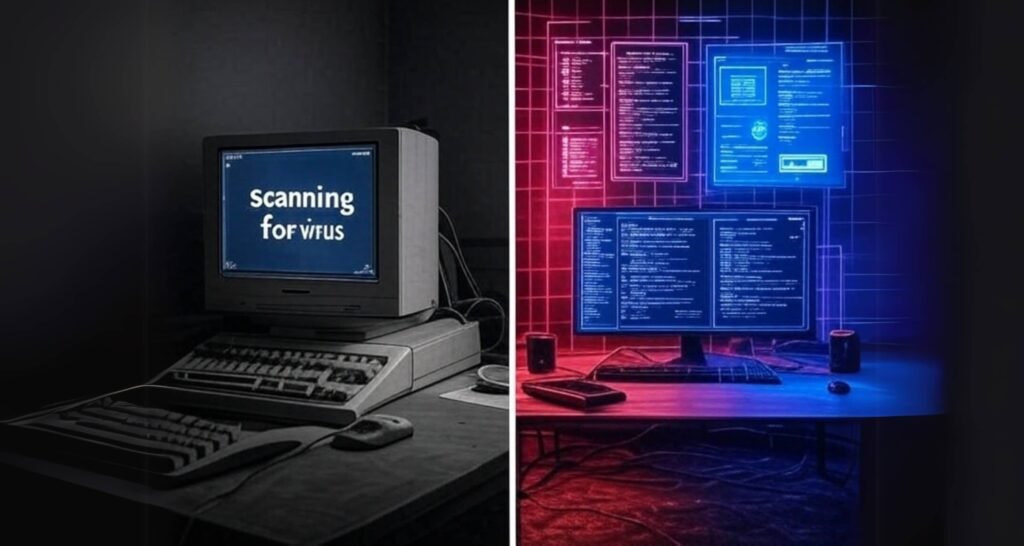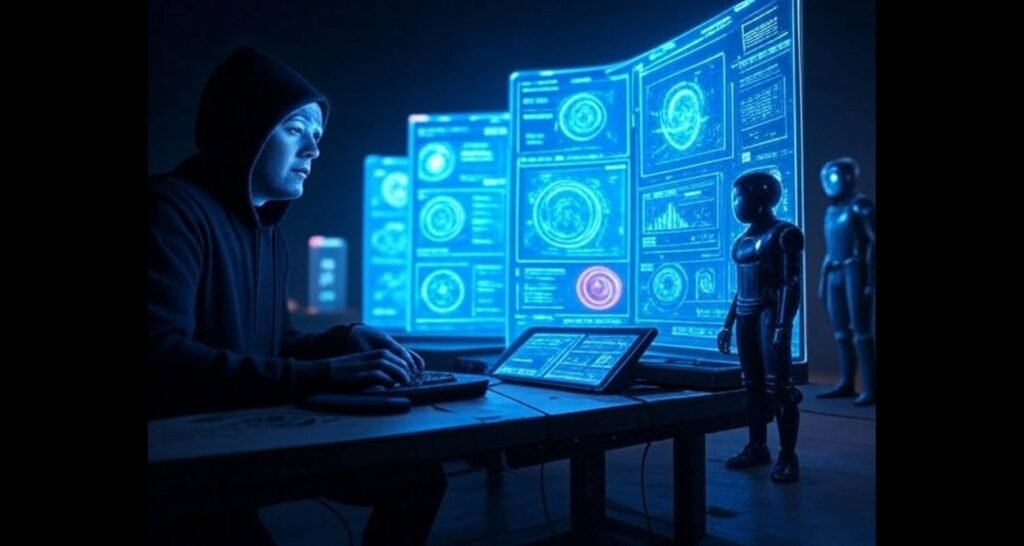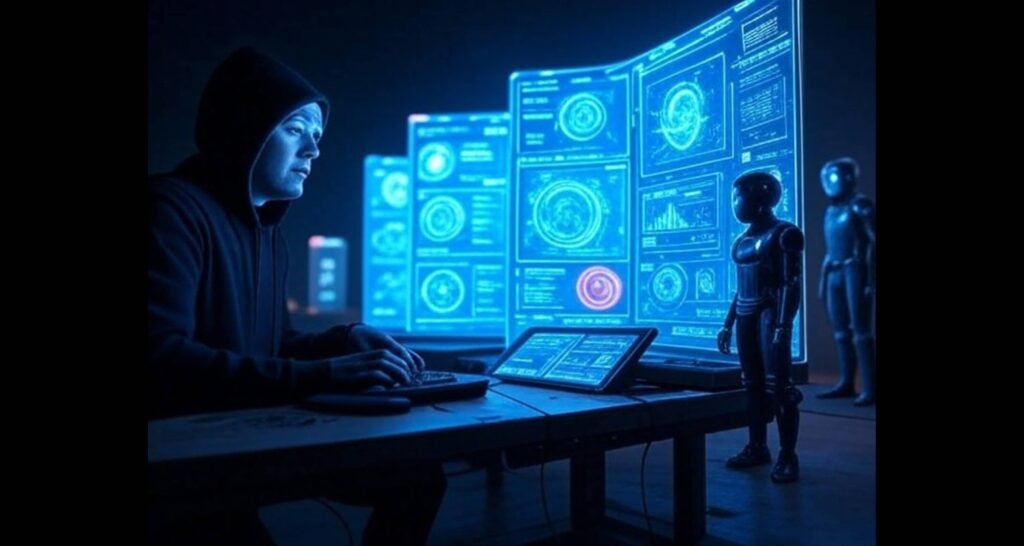Introduction: The Never-Ending Cybersecurity Arms Race
Imagine a world where the only cybersecurity threat was a slow-spreading floppy disk virus. Fast forward to today, where AI-powered malware, state-sponsored hacking, and quantum computing threats keep security experts on high alert.
The evolution of cybersecurity is a story of adaptation of arms race —where each leap in technology brings new vulnerabilities, and every defense breakthrough sparks more sophisticated attacks. In this deep dive, we’ll explore:
- The key phases of cybersecurity history
- How cyber threats have evolved (and why old defenses fail today)
- The future of cybersecurity (AI, quantum encryption, and beyond)
Let’s travel through time to understand how we got here—and where we’re headed about arms race.

The Early Days: Cybersecurity in the 1980s & 1990s arms race
1. The Birth of Viruses & Antivirus Software
- 1986: The Brain virus, the first PC virus, spread via floppy disks.
- Early antivirus programs relied on signature-based detection—matching known malware code.
- Limitation: New viruses could easily bypass these defenses.
2. The Rise of Firewalls & Network Security
- As the internet grew, firewalls (like Check Point’s 1993 solution) became essential.
- Network security focused on perimeter defense—assuming threats came from outside.
Why It Failed: The “trust everything inside” model collapsed with insider threats and phishing.

The 2000s: The Era of Cybercrime & Advanced Threats
1. Malware Goes Professional
- 2003-2007: Trojans, spyware, and ransomware (like CryptoLocker) became profit-driven.
- Cybercriminal marketplaces emerged, selling exploit kits for as little as $50.
2. The Zero-Day Exploit Boom
- Hackers began exploiting unknown vulnerabilities before patches were available.
- Stuxnet (2010) showed how malware could physically damage infrastructure.
3. The Shift to Behavioral Detection
- Antivirus evolved to heuristic analysis, detecting suspicious behavior instead of just signatures.
The 2010s: Cloud, IoT, and State-Sponsored Hacking
1. The Cloud Security Challenge
- Companies moved to AWS, Azure, and Google Cloud, but misconfigurations led to massive breaches (like the 2019 Capital One leak).
- New solutions: CASB (Cloud Access Security Brokers) and zero-trust models.
2. IoT: A Hacker’s Playground
- Smart devices (cameras, thermostats) became botnet targets (e.g., Mirai botnet 2016).
- Many IoT manufacturers ignored security, leading to weak default passwords.
3. Nation-State Cyberwarfare
- 2016 Russian election interference
- 2017 WannaCry ransomware (linked to North Korea)
2020s & Beyond: AI, Quantum, and the Next Frontier
1. AI vs. AI Cyber Battles
- Attackers use AI to automate phishing, bypass CAPTCHAs, and mimic voices (deepfake scams).
- Defenders deploy AI for anomaly detection and predictive threat hunting.
- AI-powered deception: Attackers craft hyper-realistic fake environments, while defenders use adversarial AI to detect & counter these digital illusions in real – time.
2. Quantum Computing Threats
- Quantum computers could crack RSA encryption in seconds.
- Post-quantum cryptography (like lattice-based encryption) is in development.
3. The Rise of Deception Technology
- Companies now deploy honeypots and fake networks to mislead hackers.
Cybersecurity Evolution: A Timeline
| Decade | Key Threats | Defense Innovations |
|---|---|---|
| 1980s | Floppy disk viruses | Signature-based antivirus |
| 1990s | Email worms | Firewalls, network monitoring |
| 2000s | Ransomware, botnets | Heuristic analysis, IDS/IPS |
| 2010s | Cloud breaches, IoT attacks | Zero-trust, CASB, EDR |
| 2020s+ | AI-driven attacks, quantum threats | AI defense, quantum encryption |
The Future: What’s Next in Cybersecurity?
1. Autonomous Security Systems
- Self-healing networks that detect and patch vulnerabilities automatically.
2. Biometric & Behavioral Authentication
- Keystroke dynamics, gait analysis, and continuous authentication replace passwords.
3. Cyber-Physical Security Merging
- Protecting smart cities, autonomous vehicles, and medical IoT from life-threatening hacks.
Final Thoughts: Staying Ahead in the Cybersecurity Arms Race
The evolution of cybersecurity proves one thing: attackers innovate faster than defenders.
To stay secure in the arms race:
- Assume breaches will happen (adopt zero-trust models).
- Prioritize AI and automation (humans can’t keep up alone).
- Prepare for quantum threats (transition to post-quantum encryption now).


